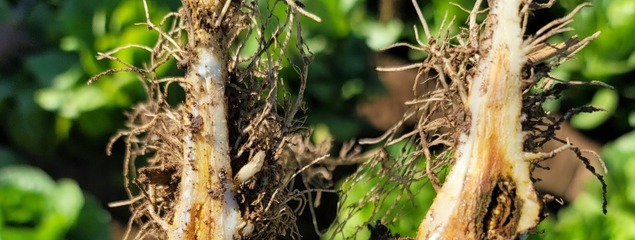
Plant Disease Management
Impatiens Necrotic Spot Virus (INSV)
Casual Agent
Impatiens Necrotic Spot Virus (INSV) is primarily transmitted by the western flower thrips (Frankliniella occidentalis) who are the primary vector for this plant pathogen. When feeding on an infected plant, the thrips acquire INSV which remains within the thrips throughout their lifetime and allows them to transmit the disease to healthy plants/crops. Western flower thrips are particularly adept at spreading INSV due to their ability to travel to various different plants/fields and their abundance.
There are two ways in which INSV can be spread by western flower thrips. Primary infection occurs when an infected adult migrates to a healthy plant and transmits the virus while feeding. Secondary infection occurs when the larvae of western flower thrips feed on a plant that is infected with INSV and become infected adults who can then continue to spread INSV to other plants. It is important to note that adult western flower thrips are only able to transmit INSV but are not able to acquire it. Western flower thrips can only acquire INSV while they are in their larval stage. This virus can also be caused/spread through mechanical means, such as tools or farm equipment that is compromised with traces of INSV. Effective management of INSV involves monitoring thrips populations, implementing cultural controls to reduce their numbers, and using targeted chemical treatments to control the vector and prevent further spread of the virus.

